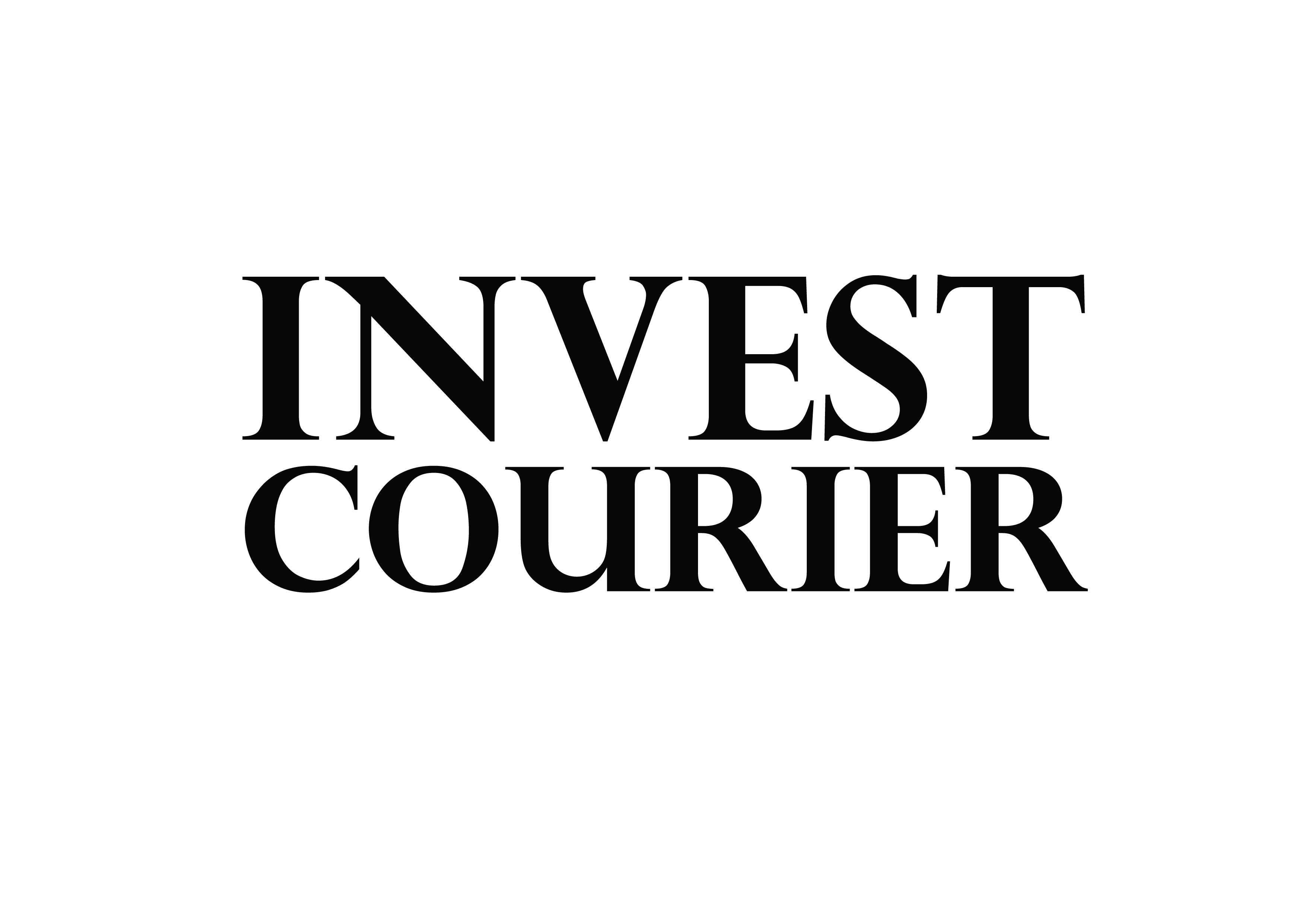Imagine waking up to money in your account without lifting a finger. A well-built blog can become your financial engine, generating revenue even when you’re not working. It’s like planting a seed that grows into a steady cash flow over time.
Some creators earn $60k/month by selling digital courses or leveraging ads. While it requires effort upfront, the long-term rewards make it worthwhile. Think of it as building a business that works for you.
This guide breaks down proven strategies, from affiliate marketing to SEO optimization. You’ll learn how to turn your existing platform into a profit machine—just like my food blog, which brings in five figures monthly.
Key Takeaways
- Blogs can generate revenue with minimal ongoing effort
- Success stories include $60k/month from digital products
- Three core methods: ads, affiliates, and digital sales
- Initial setup takes work, but maintenance is lighter
- Most see earnings within 6-12 months
What Is Passive Income Through Blogging?
Ever dreamed of a revenue stream that doesn’t demand daily effort? A blog can deliver exactly that. Unlike traditional jobs, it earns money long after you create content. But let’s be real—no income is 100% hands-off.
Defining True Passive Income in Blogging
Semi-passive earnings require upfront work. Expect 6-12 months of building traffic before seeing consistent results. Once established, maintenance drops to 2-3 days monthly—think plugin updates or content refreshes.
For example, creators managing digital courses might invest 20-30 hours weekly initially. Later, they earn $60k/month with far less effort. That’s the sweet spot: high returns for minimal upkeep.
How Blogging Differs From Active Income Streams
Sponsored posts or freelance services trade time for dollars. Stop working, and payments dry up. A monetized blog, however, keeps earning via:
- Ads ($10-$50 RPM from networks like Mediavine)
- Affiliate links (commissions on autopilot)
- Digital products (evergreen sales)
Mediavine requires 10k monthly sessions for premium ads—a milestone marking your shift toward true financial freedom. It’s not “get rich quick,” but passive enough to redesign your lifestyle.
Why Blogging Is Perfect for Passive Income
What if your best-performing content kept working while you slept? Unlike side gigs demanding hourly trades, a well-optimized blog scales effortlessly. It’s the difference between selling handmade crafts and building a self-sustaining ecosystem.
The Scalability of Content Creation
Evergreen articles compound like interest. One finance blogger’s 30 posts drive 80% of their monthly revenue—years after publishing. Here’s how:
- SEO longevity: A single guide can attract traffic for 5+ years with minor updates.
- Repurposing: Turn a post into a podcast, YouTube script, or infographic for social media.
- Outsourcing Virtual assistants handle research, freeing you to strategize.
Automation Potential in Blogging
Tools like Tailwind and Zapier transform manual tasks into workflows. For example:
- Schedule 6 months of Pinterest pins in 1 hour with Tailwind’s SmartLoop.
- Auto-publish content to LinkedIn using Zapier+Canva templates.
- Teachable handles course delivery and tax compliance automatically.
Compare this to physical products: No inventory, shipping, or customer service calls. Just systems working while you focus on growth.
How to Make Passive Income Through Blogging: 3 Core Methods
Monetizing your blog doesn’t require constant attention. Focus on these three core strategies to build sustainable income streams. Each method offers unique advantages, from hands-off ad revenue to high-margin digital sales.
Display Advertising Networks
Ads generate revenue based on traffic. Networks like Mediavine or Ezoic pay $10-$50 per 1,000 views (RPM). Premium platforms require 10k+ monthly sessions but offer higher payouts.
Optimize placements using heatmaps—sidebar and in-content ads perform best. One blogger earned $2k/month from a single review post with strategic ad integration.
Affiliate Marketing Programs
Earn commissions by promoting products. Amazon Associates offers 4%-10%, while niche programs like Hostinger pay up to 70%. Top niches include SaaS, finance, and parenting.
Authentic reviews convert best. Highlight pros, cons, and personal experiences to build trust. Tiered programs reward higher sales volumes with increased rates.
Creating Digital Products
Evergreen digital products like ebooks or courses require upfront work but sell repeatedly. Platforms like Teachable handle delivery for a 5%-10% fee.
Price strategically: $27-$997 tiers cater to different audiences. A well-structured email sequence can boost launch sales by 30%.
Setting Up Your Passive Income Blog
Your blog’s foundation determines its earning potential. A fast, secure website with smart design choices converts casual visitors into loyal customers. Start strong with these essentials.

Choosing the Right Blogging Platform
Hostinger offers beginner-friendly setups for $2.99/month, while WordPress.org provides full control. Compare costs and features:
- Hostinger: One-click installs, built-in security.
- WordPress.org: Unlimited plugins, ideal for scaling.
Need SEO flexibility? WordPress wins. Prefer simplicity? Hostinger saves time.
Essential Technical Setup
Speed and security boost trust. Aim for under 2-second load times with these *tools like*:
- WP Rocket: Caching for faster pages.
- RankMath: Optimize content effortlessly.
- SSL certificates: Encrypt user data.
Daily backups prevent disasters—set them up immediately.
Designing for Conversions
Turn traffic into revenue with these tactics:
- Opt-in forms: Offer free guides for email signups.
- Product showcases: Highlight digital products prominently.
- Mobile-first layouts: 60% of users browse on phones.
Test placements with heatmaps. Sidebar CTAs often outperform footer links.
Creating Content That Generates Passive Income
Quality blog posts work like silent salespeople, converting visitors while you sleep. The secret? Strategic planning that balances timeless value with search-friendly optimization. Your content becomes an asset that compounds over time.
Evergreen Foundations vs Trend Opportunities
Follow the 80/20 rule: 70% evergreen guides versus 30% trending topics. Evergreen pieces like “Beginner’s Guide to Investing” maintain relevance for years, while newsjacking viral trends can spike short-term traffic.
Tools like Ahrefs outperform Ubersuggest for finding evergreen keywords with:
- Sustained search volume (1k+ monthly queries)
- Low competition (difficulty score under 30)
- Commercial intent (high conversion potential)
Structuring Posts for Maximum SEO Impact
Google’s E-E-A-T guidelines (Expertise, Authoritativeness, Trustworthiness) demand thorough, well-researched content. Implement the pillar-cluster model:
One comprehensive pillar post links to related cluster articles, creating an SEO-friendly content ecosystem.
Optimize for featured snippets with:
- Clear question-and-answer formatting
- Bullet points in the first 300 words
- Schema markup for recipe/how-to posts
Refresh older posts every 6-12 months by:
- Updating statistics and broken links
- Adding video embeds (30% higher engagement)
- Creating content upgrades (checklists/templates)
This approach keeps your blog posts working harder with less ongoing effort from you.
Mastering Search Engine Optimization (SEO)
Unlocking consistent traffic starts with smart SEO strategies. Your website can rank higher and attract visitors for years with the right techniques. It’s not about shortcuts—it’s about sustainable growth.
Keyword Research for Passive Traffic
Long-tail phrases like “best budget DSLR cameras for beginners” convert better than generic terms. Tools like Ahrefs reveal gaps in competitors’ content.
| Tool | Best For | Price |
|---|---|---|
| Ahrefs | Backlink analysis | $99/month |
| Ubersuggest | Basic keyword data | Free plan |
On-Page Optimization Techniques
Structure matters. Follow this checklist:
- Use H2/H3 headers for readability
- Add alt text to images (include keywords)
- Keep URLs short and descriptive
Building Quality Backlinks
Guest posts on high-authority sites boost your search engine rankings. Try these tactics:
- Offer to fix broken links with your content
- Create shareable infographics
- Network with niche influencers
Google’s algorithm rewards natural link-building over spammy tactics.
Building an Email List for Passive Sales
Your inbox could become a 24/7 sales engine with the right approach. Email marketing converts 20-35% better than social media, turning subscribers into buyers. This system works while you sleep, promoting products and affiliate links automatically.
Opt-In Strategies That Convert
Visitors won’t hand over their email without incentive. Offer lead magnets like:
- Cheat sheets solving specific problems
- Free mini-courses with immediate value
- Toolkits with templates or checklists
Timing matters. Exit-intent popups convert 3x better than sidebar forms. Place opt-ins after demonstrating value—typically at post midpoints or conclusions.
Automated Email Sequences
Set up workflows that nurture your audience:
- Welcome series: 3-5 emails introducing your brand
- Educational content: Build trust before selling
- Cart abandonment flows: Recover lost sales
ConvertKit users see 28% higher open rates with segmented lists versus broadcast blasts.
Platforms like MailerLite offer visual workflow builders. Test subject lines weekly—small tweaks can boost revenue by 15%.
Remember: Clean your list quarterly. Remove inactive subscribers to maintain deliverability. GDPR compliance isn’t optional—always get explicit consent.
Monetizing with Display Advertising
Strategic ad placements can significantly boost your blog’s earnings. When done right, display ads generate revenue without constant oversight. The key lies in balancing user experience with smart monetization tactics.

Ad Network Requirements
Premium networks like Mediavine require 10k monthly sessions for approval. Smaller blogs can start with Ezoic or AdThrive, which have lower thresholds. Prepare your website by:
- Ensuring fast load times (under 2 seconds)
- Publishing 30+ high-quality posts
- Maintaining a clean, mobile-friendly design
Approval checklists often review traffic sources and content originality. Avoid pop-ups that disrupt user experience—they’re a common rejection reason.
Optimizing Ad Placements
Heatmaps reveal where visitors engage most. Place ads in high-click zones like:
- After the first paragraph (above the fold)
- Mid-content (between sections)
- Sticky sidebars for desktop users
Mobile layouts perform best with inline ads—sidebar space shrinks on smaller screens.
Test refresh rates to avoid ad fatigue. Programmatic bidding (like Google AdX) often outperforms direct sales by 20-30%. Always monitor RPM (revenue per mille) to tweak placements.
Earning Through Affiliate Marketing
Turning recommendations into revenue is simpler than you think. Affiliate marketing lets you earn money by sharing products you love—no inventory or customer service needed. Just strategic links in your content.
Selecting Profitable Affiliate Programs
Not all programs pay equally. Compare options using these criteria:
| Program | Commission Rate | Cookie Duration | Best For |
|---|---|---|---|
| Amazon Associates | 1%-10% | 24 hours | General products |
| ShareASale | 5%-50% | 30-90 days | Niche brands |
Prioritize programs with:
- Recurring commissions (hosting, SaaS)
- High conversion rates in your niche
- Dashboard tracking for performance insights
Creating Authentic Product Reviews
Readers spot insincere praise instantly. Build trust with balanced evaluations:
- Comparison templates: “X vs Y” posts outperform single-product reviews by 40%.
- Video integrations: Embed demo clips to showcase products in action.
- Disclosures: Place FTC notices above the fold to maintain compliance.
Bestseller lists convert 22% better than standalone reviews—highlight top 5 picks with affiliate links.
Seasonal promotions boost earnings. Plan content around holidays or product launches for maximum impact.
Developing Digital Products
Digital products can transform your expertise into automated earnings. Unlike physical goods, they require no inventory or shipping. Once created, these assets generate money repeatedly with minimal upkeep.
Ebooks vs Online Courses: Choosing Your Format
Ebooks convert knowledge into portable resources quickly. They account for 70% of beginner digital products sales due to lower production costs. Courses command higher prices but need more development time.
Compare top platforms for hosting your products:
| Platform | Fees | Best For |
|---|---|---|
| Teachable | 5% + $39/month | Interactive courses with quizzes |
| Podia | 8% or $39/month | All-in-one memberships + downloads |
Validation prevents wasted effort. Before creating, survey your audience about:
- Their biggest unresolved challenges
- Preferred learning formats (video/text)
- Budget expectations
Smart Pricing Strategies
The average course sells for $497 when positioned as premium. Structure payments to maximize conversions:
Payment plans increase accessibility—offer 3 installments at 40% higher total value than one-time pricing.
Boost revenue with these proven tactics:
- Upsell templates: Add workbooks after initial purchase
- Limited bonuses: Include certificates for social proof
- Evergreen webinars: Automated replays drive 22% more sales
Repurpose PLR content strategically. Expand sections into standalone guides or podcast episodes. Always customize to match your brand voice.
Community features increase course completion rates. Private forums or live Q&A sessions build loyalty. Support systems reduce refund requests while boosting word-of-mouth referrals.
Advanced Passive Income Strategies
Ready to take your blog earnings to the next level? Beyond ads and affiliates, premium models create predictable revenue streams. These approaches require more setup but deliver higher long-term value.
Membership Site Models
Exclusive content builds loyal communities. Platforms like MemberPress and Kajabi handle payments and access control. Compare key features:
| Feature | MemberPress | Kajabi |
|---|---|---|
| Monthly Cost | $149/year | $119/month |
| Drip Content | Yes | Advanced scheduling |
| Community Tools | BuddyPress integration | Built-in discussions |
Successful membership sites often use:
- Tiered access: Free, $19/month, $99/year levels
- Live Q&A sessions: Members-only Zoom calls
- Resource libraries: Downloadable templates
Case studies show memberships retain 60% of subscribers beyond 6 months when offering fresh weekly content.
Licensing Your Content
Your existing posts can generate income through syndication. PLR (Private Label Rights) sales let others rebrand your work. Common licensing opportunities include:
- Translation rights for international publishers
- Corporate training adaptations
- Podcast sponsorship packages
Always retain copyright while granting specific usage rights. Standard rates range from $200-$5,000 per licensed piece depending on:
- Content depth (guides vs listicles)
- Exclusivity terms
- Audience reach metrics
Whitelabel products work particularly well in niches like marketing and health. A fitness blogger earned $12k licensing meal plans to gym chains.
Automating Your Blog’s Maintenance
Streamlining operations frees up time for growth-focused tasks. Smart automation turns hours of manual work into efficient systems. Your blog can practically run itself with the right tools like CoSchedule and Zapier.
Efficient Content Scheduling
Batch creation saves 70% of weekly work hours. Try these proven workflows:
- Use ChatGPT to repurpose pillar posts into 10+ social media snippets
- Schedule 3 months of content in one sitting with CoSchedule
- Integrate AI writing assistants for first drafts
Top platforms for seamless scheduling:
| Tool | Best Feature | Pricing |
|---|---|---|
| CoSchedule | Drag-and-drop calendar | $29/month |
| Trello | Visual workflow boards | Free-$17.50/month |
Hands-Off Social Media Management
Automated sharing expands reach without daily effort. Buffer and Hootsuite lead the pack with:
- Cross-platform posting from one dashboard
- Optimal timing algorithms
- Performance analytics
Zapier connects 5,000+ apps—automatically sharing new posts to LinkedIn, Twitter, and Pinterest.
Set up these critical maintenance automations:
- Security updates: Weekly plugin scans
- Backup systems: Daily cloud backups
- Comment filters: Auto-flag spam
For deeper insights on scaling operations, explore these automated income strategies.
Scaling Your Passive Income Streams
Growing your blog into a multi-channel business requires smart scaling strategies. The most successful creators don’t rely on one method—they build diverse revenue streams that compound over time. This approach minimizes risk while maximizing earning potential.
Diversifying Income Sources
A balanced portfolio protects against market shifts. Follow the 50/30/20 rule:
- 50% core earnings: Reliable streams like ads and affiliates
- 30% growth investments: Testing new products or markets
- 20% experimental bets: High-risk, high-reward opportunities
Track these key metrics monthly:
| Metric | Healthy Benchmark | Warning Sign |
|---|---|---|
| Monthly Revenue Growth | 10%+ | Under 5% |
| Customer Lifetime Value | 3x Acquisition Cost | Under 2x |
| New Customer Cost | Under $100 | Over $150 |
Expand internationally by localizing top-performing content. Spanish translations of popular posts can unlock Latin American markets with minimal effort.
Outsourcing Content Creation
Free your time for high-value tasks by delegating. Virtual assistants handle routine work at competitive rates:
- Content research: $8-$15/hour
- Basic editing: $5-$12/hour
- Technical updates: $15-$25/hour
Document every process before outsourcing. Clear checklists prevent quality drops.
Reinvest 30% of profits into automation tools. Systems like multiple income streams create compounding returns. The remaining 50% becomes personal income, while 20% funds experiments.
Joint ventures accelerate growth. Partner with complementary brands to co-create products or host webinars. Shared audiences mean double the exposure with half the work.
Conclusion: Your Passive Income Blogging Journey
Building a blog that earns money takes effort, but the rewards grow over time. Start with a solid setup, create valuable content, and monetize with ads, affiliates, or digital products. Each step brings you closer to financial freedom.
Consistency is key. Update old posts, engage your audience, and refine your strategies. Many creators see their best results after 6-12 months of steady work.
Ready to begin? Download our free guide with a blog launch checklist. Share your progress in our community—your story could inspire others.
Remember, every successful blogger started with one post. Yours could be next.
FAQ
What exactly is passive income in blogging?
Passive income in blogging means earning money with minimal ongoing effort. Once you create content, it continues to attract visitors and generate revenue through ads, affiliate links, or digital products without daily work.
How long does it take to start making money from a blog?
Most bloggers see their first earnings within 3–6 months if they focus on SEO, quality content, and consistent traffic-building strategies. Building a profitable blog often takes 12+ months.
Do I need technical skills to start a blog?
No. Platforms like WordPress or Squarespace make it easy. Many tools handle technical aspects, letting you focus on writing and marketing.
What’s the best way to monetize a new blog?
Start with affiliate marketing and display ads. Once you build an audience, add digital products like ebooks or courses for higher earnings.
How much traffic do I need to earn from ads?
Most ad networks require 10,000+ monthly visitors. Google AdSense accepts smaller sites, but earnings grow significantly with more traffic.
Can I blog part-time and still earn passive income?
Yes! Many successful bloggers start part-time. Consistency matters more than hours—publishing quality content regularly helps build momentum.
What’s the biggest mistake new bloggers make?
Giving up too soon. Success requires patience—focus on SEO, audience needs, and testing monetization methods before expecting results.
Are social media followers necessary for blogging income?
Helpful, but not required. SEO-driven traffic from search engines often delivers more sustainable passive income than social media alone.
How do I choose profitable affiliate products?
Pick products relevant to your audience. High commission rates, good reviews, and trusted brands convert better. Amazon Associates is beginner-friendly.
Should I create my own products or stick with affiliates?
Start with affiliates to test demand. Once you understand your audience, digital products like courses or printables offer higher profit margins.


